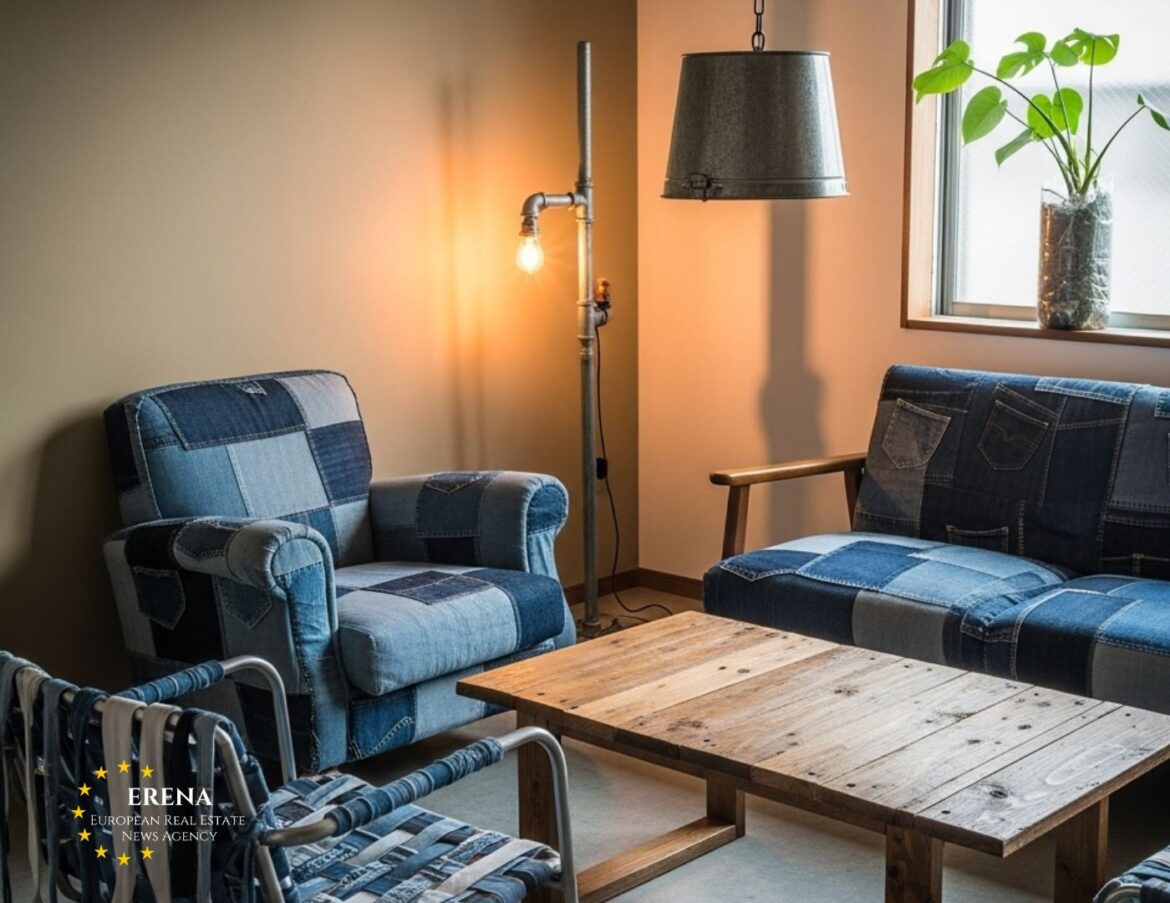As the climate crisis intensifies and resource scarcity becomes a pressing concern, the European interior design sector is undergoing a radical transformation. More and more designers, architects, and consumers are turning to recycled materials as a viable and sustainable alternative to traditional interior solutions. This shift is not merely a fashion trend—it’s a strategic response to ecological challenges.
Why Europe Is Rethinking Interior Design
The interior and construction industries have long been associated with high resource consumption. According to the European Environment Agency, the building and interior sectors in the EU generate more than 35% of total waste and account for around 40% of energy use. Meanwhile, the European Green Deal sets a goal of climate neutrality by 2050.
Transitioning to recycled materials in interior design has become both a political and economic priority. The European Commission has already invested over €750 million in innovation related to sustainable design and material reuse.
Popular Recycled Materials in Interior Design
Modern European interiors now frequently incorporate the following recycled or repurposed materials:
- Reclaimed wood: from demolished buildings, old beams, or vintage parquet; particularly popular in France (e.g., Provence, the Alps).
- Recycled glass: used for decorative panels and windows, with Italy and Belgium leading production.
- Metal: industrial sheets, pipes, and elements reused in “upcycled” designs in Germany.
- Plastic: recycled PET bottles transformed into carpets, tiles, and furniture; the Netherlands hosts many startups in this niche.
- Textiles: reclaimed cotton and wool for upholstery, curtains, and rugs—Sweden and Finland are key players in eco-fabrics.
Design as Creative Rebirth
Sustainable interiors are not only about using secondhand items—they are about reimagining function and form. In Barcelona, designer Jordi Arnal built a restaurant using 90% recycled materials, including bus seats and bottle-glass chandeliers. The project became a cultural landmark in the El Raval district.
In Copenhagen, the Green Key Urban Hotel was fitted entirely with repurposed IKEA components, secondhand fixtures, and recycled plastic decor. The cost of furnishing was reduced by 35%—around €1,100 per m² instead of €1,700 using conventional methods.
Economic Benefits and Growing Demand
Eco-conscious interiors are increasingly seen as a competitive edge. In Berlin, apartments featuring recycled design elements are sold at a 7–10% premium. In Paris’s 11th arrondissement, homes with eco-interiors command €9,000–€11,000 per m², compared to €8,000–€9,500 for conventional units.
According to JLL, corporate tenants prefer leasing offices with green interiors to meet ESG (Environmental, Social, and Governance) requirements. These spaces are not only eco-friendly but enhance brand image.
Regulation and Certification
The European market is tightening standards and labeling requirements for recycled materials:
- Cradle to Cradle Certified® is widely recognized across the EU;
- EU Ecolabel certifies environmentally friendly products;
- FSC Recycled ensures wood is from post-consumer sources;
- BREEAM and LEED certifications consider interior sustainability.
Germany’s updated DIN 68800-2 standard (effective 2025) will regulate fire safety and durability of reused wood.
Challenges in Scaling Up
Despite growing interest, recycled interior design faces several obstacles:
- Limited supply: many materials are unique and not mass-produced;
- Lack of consumer awareness;
- Logistical complexity when sourcing matching pieces;
- Longer project timelines due to bespoke design requirements.
Digital platforms such as Materiom and The Circular Project help by connecting designers with recycled material suppliers across Europe.
Social and Cultural Value
Sustainable interiors are evolving into a lifestyle philosophy. They reflect a shift away from overconsumption and toward mindful living.
In Amsterdam, the “Wasted Interiors” project hosts workshops where residents learn to build furniture from plastic waste. These initiatives promote community engagement and circular economy education.
Sample Prices Across Europe
- Recycled glass lighting: €60 in the Netherlands, €120 in France
- Old wood kitchen fronts: €350 per meter in Germany
- Chairs from recycled plastic: €70 in Italy
- Textile rugs: €90 per m² in Sweden
Future Outlook
By 2030, the share of recycled materials in interiors is projected to grow from 12% to 30% across the EU. The European Commission is exploring the creation of a centralized trading platform for certified recycled interior materials.
Design schools in Germany, Belgium, and Denmark are also launching dedicated programs focused on upcycling and sustainable design.
Conclusion
Recycled interiors are more than a stylistic choice—they are a mindset. Each item tells a story, and every surface embodies value. Europe is proving that a sustainable design approach can not only transform spaces but redefine how we consume and create.
As sustainability standards become stricter and consumer awareness grows, what began as a trend is turning into an ecological imperative and a new benchmark for interior quality.

